Sahastra Tal Trek – The Lake of Gods
Region: Uttarakhand
Base Camp: Silla Village
Days: 9
Altitude: 16,400 ft
Grade: Moderate
Distance: 65 km
Min Age: 10 Years+
Trek Description
Sahastra Tal, a glacial lake known for spirituality, far away from the noise of the world, is settled naturally amid Bhilangana valley in the Garhwal range. Located in Tehri Garhwal District of Uttarakhand, this is at 15,580 feet. To see this beautiful scenic lake, people trek for several days on a challenging trail in Tehri. There are several trek routes for the lake starting from different points.
Today, we are going to learn about the same Sahastra Tal trek. In simple words, it is an uncommon, precious, and adventurous trek, which will make you walk through unreal Bugyals, a number of glacial lakes, and rhododendron forests.
Overall there are 7 lakes in the valley of Bhilangana. Out of them, Sahastra Tal is the topmost, largest, and deepest one. Besides Sahastra Tal, the other lakes are Pari Tal, ArjunTal, BhimTal, Draupadi Tal, Gaumukhi Tal and Lamb Tal.
All the queries regarding the trek Itinerary, best time, challenging level, and vegetation of this trek will be resolved one by one through this article.
Sahastra Tal Trek Location
The more difficult the trek would appear, the more fairy the view would be. This applies to the Sahastra Tal trek. Sahastra Tal trek falls amid Bhilangana and Balganga Ranges. These ranges are formed by the two significant rivers Bhilangana and Balganga. Both of these rivers play a great role in enhancing the beauty of the valleys on this trek route.
Within the 65 Km distance, there are some villages that surround the different trek routes of Sahastra Tal Lake. On the west side of the lake, Silla and Malla village are located, which are the most popular starting points of this trek. At a certain distance from Silla, there are a group of villages in the southwest of the lake. These villages are Kumarkot, Thandi, Kamad and Bharkot. In the southeast, Gangi and Ghuttu villages are situated.
Around the Sahastra Tal Lake
This lake in a steep downslope of the valley looks like we have come to heaven. From all sides of the lake, there is a natural boundary, so anybody can not get the lake view from a distance. In the north of the lake, there is Khatling Glacier and in the extreme north, there is Gangotri Glacier. On the northwest of this Sahastra Tal, the Bhagirathi river streams flow. Similarly, the Balganga and Bhilangana river flows on the southwest and southeast of the lake respectively. Balganga, which passes from the Jaraav Tal and Kamad Village, comes and meets with the Dharam Ganga in Budha Kedar.
Spiritual Significance of Sahastra Tal
Sahastra Tal is a blissful lake, which is often linked with several mystical stories. In general, it is considered a Dev Tal or Gandharv Tal. And so some trekkers call it the Lake of Gods. Specially it’s assumed to be dedicated to Lord Vishnu.
The water of Sahastra Tal is so pure and transparent, that you can see your reflection in the water. It is also known as Darshan Tal. On the bank of Tal, the Brahma Kamal is grown so people pluck it and offer it to God. Usually, visitors chant and recite religious prayers by sitting on the bank.
The local residents have faith that the fairies and Gandharv come to this lake secretly. Besides this, some people say that Gods come here in the Brahma Muhurta and perform the Pooja on the bank of the lake.
The people residing in nearby areas like Gangi, Silla and Kamad visit here often to take a holy dip in the lake. For them, this is a local pilgrimage site. So on the occasions of Hindu Festivals, they visit here with devotion in heart.
Besides this, in the Pitra Paksha, Pinddan is performed to the peace of ancestors’ souls in the bank of Sahastra Tal. They believe that the way to Swarg is ahead of the lake. Many people leave their ancestors’ photographs there on the bank. However, this practice is not that environmentally friendly.
Itinerary
Drive Distance: 221 km
Drive Time: 8-9 hours
On the day 1st of our journey, we will arrive at Netala (Uttarkashi) which would be at least 8-9 hours of driving from Dehradun. In Netala we will take a halt in a hotel which will be booked by our team already.
The total distance and time traveled on the 1st day will be 221 km and en route we will cover Landour, Moriana Top, Chinyalisour, and Uttarkashi.
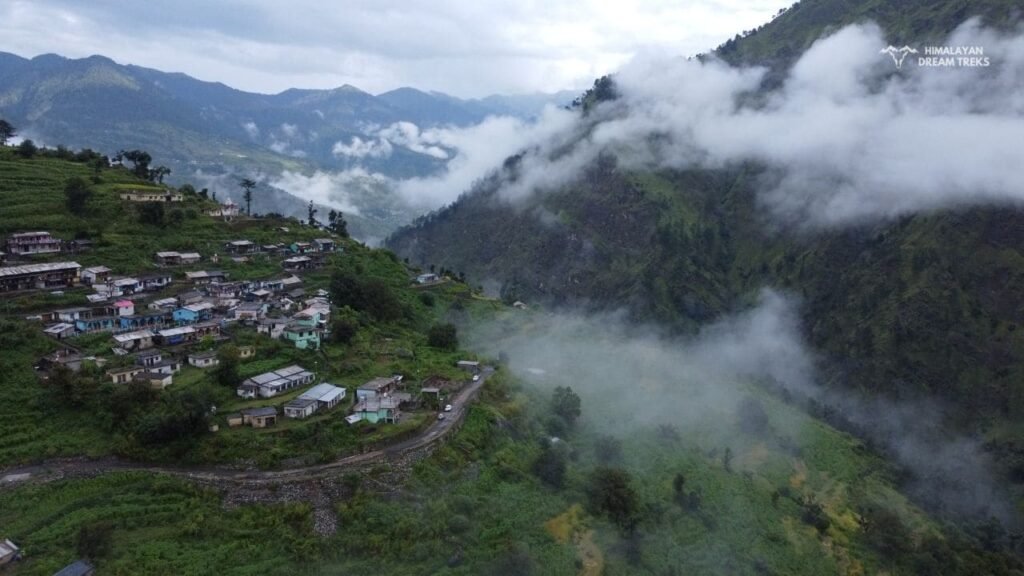
Trek Distance: 8 km
Trek Time: 5 hours
The trek will begin from Silla Village on Day 2. One hour’s drive will take us from Netala to Silla Village.
As soon as we cross the Bhagirathi river on the route to Gangotri we will reach there, to be precise. Afterward, we will move forward on an inclined route to Gairi through a trek.
Gairi is also inhabited by the villagers of Silla only. Here they’ve made a small settlement of huts made up of wood and stones, a.k.a, Chaani and live temporarily in them during the monsoon with their livestock. Throughout the trek, you’ll witness the typical and traditional cultures of the Garhwal region. From their living conditions to earning their livelihood will all be displayed. We’ll pass through the dense forests of Kharsu, Moru, Thunder, Kafal, Bhanjh, and Burans on our trail.
In Gairi we’ll stay for a night and it would take 5 hours to complete the above-mentioned journey and its total distance is 8 km.
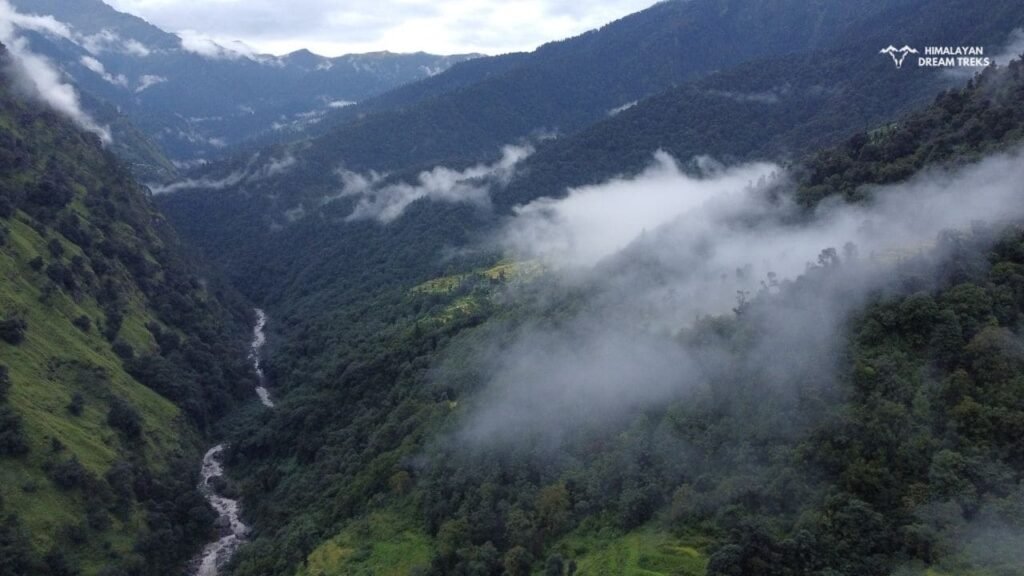
Trek Distance: 10 km
Time: 6-7 hours
On the 3rd day, we will begin to trek towards Chuli La Pass. It might feel a little challenging on this path as it’s covered with dense deciduous and oak forest, but it’s only until we cross this pass. After that, the route is comparatively less rough and more pleasant.
After reaching a certain distance, we will have to trek downwards and then after crossing the Bugyal, we shall hike upwards to the peak of the Kush Kalyan Bugyal. We will set up a camp there and spend the night. Similar to Dayara and Ali Bedini Bugyal, the alpine meadows of the Kush Kalyan are an offbeat destination in Uttarakhand. Not many trekkers know about this meadow yet, therefore it receives fewer tourists. There are the huts and cattle of the villagers of Silla, Pilung, and Pinswar. The grazing area is huge here and so the people of the Gujjar and Bakarwal tribes migrate here with their cattle.
The bugyal also has some divine and spiritual essence and many small temples of local Gods are built here. The total journey of the day will be 10 km and will take around 6-7 hours.
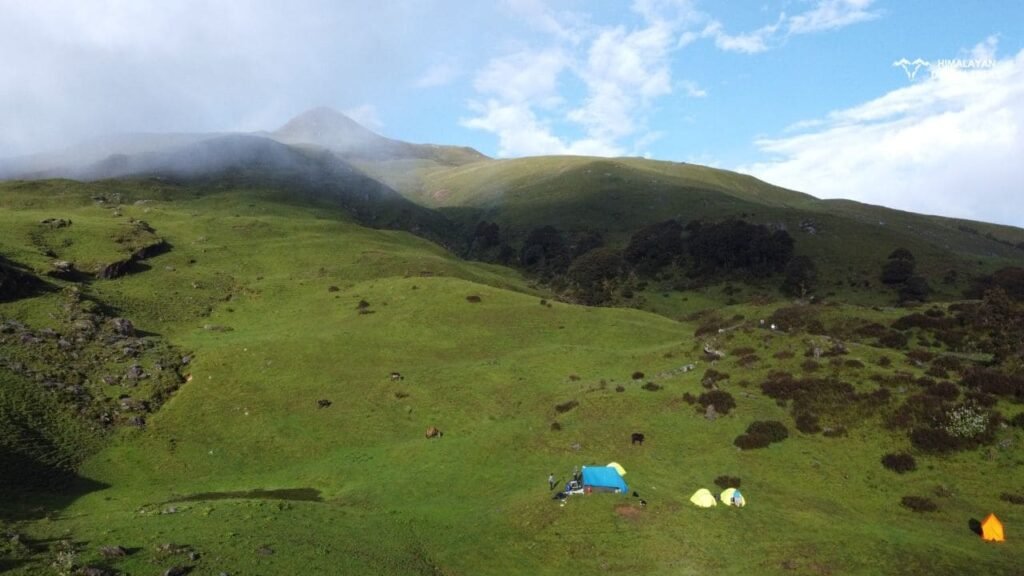
Trek Distance: 12 km
Time: 6-7 hours
On the day 4th, we shall reach the Kyarki Bugyal. We will start our journey from the endpoint of Kush Kalyan Bugyal and will cover a distance of 12 km in 7 hours. The terrain of the Kyarki is a little steep, narrow and rocky as well. The route is covered with large meadows in the surroundings. Unlike Kush Kalyan, Kyarki is almost completely uninhabited and that makes it even more peaceful and serene.
It might not be as enormous as Kush Bugyal but offers a view of several popular peaks such as Srikanth, Kalanaag, Draupadi ka Danda, and Bandarpoonch. The diverse wildlife can also be seen here including Ibex, Bharal, Himalayan Bear, Pika, and Leopard. And, It will be our camping site for this night.
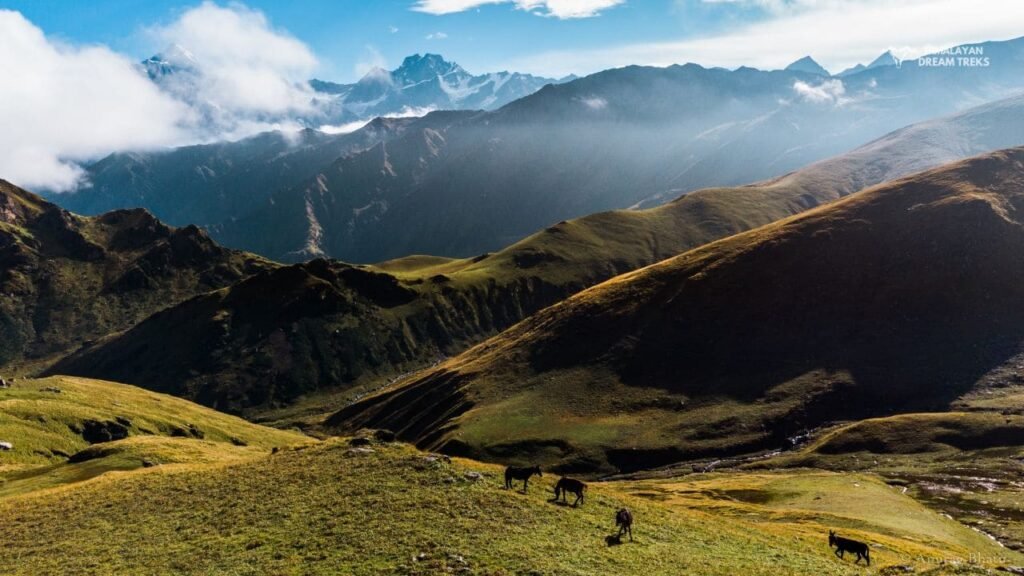
Trek Distance: 6 km
Time: 3-4 hours
On the morning of the 5th day of our trek, we will leave for Lamb Tal which is at a 6 km distance. In the starting, we will be walking on narrow cliffs to the Dharamshala campsite.
Once we cross Dharamshala, all the meadows will be out of sight and the climb to the Kokuli top will begin. On reaching the top, the Lamba Tal, surrounding lakes and Khatling glacier can easily be seen. To Lamba, we’ll have to descend from the top towards it. We will see Brahma Kamal, Neel Kamal, Phen Kamal and other Himalayan flowers on our way. We will camp there for the night. According to the area, Sahastra Tal is bigger than the Lamb tal.
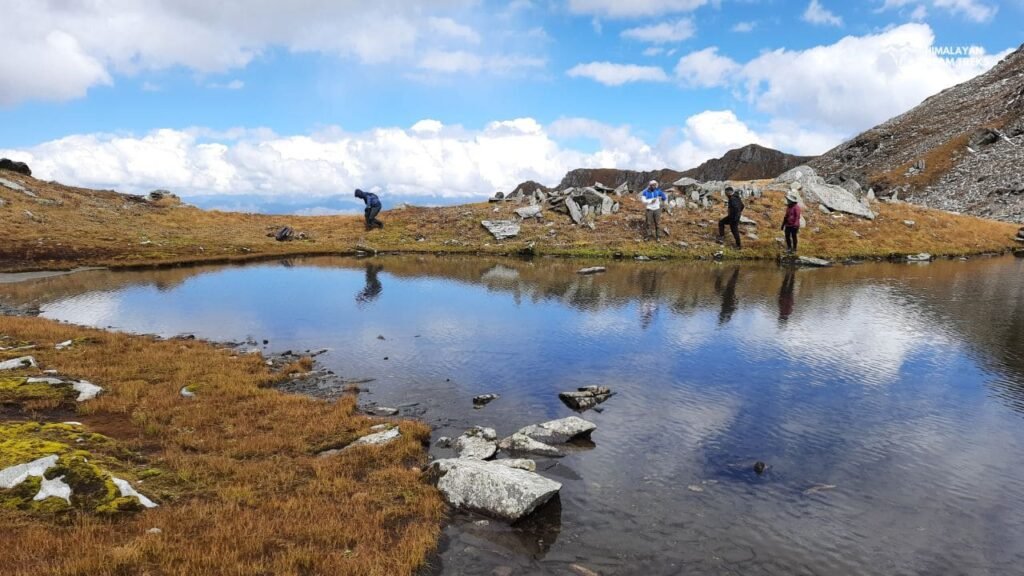
Trek Distance: 12 km
Time: 8-9 hours
We will start trekking towards the Shastra Tal which will be more challenging but double exciting. As we cross the Dhoni Tal, we will reach the Sahastra Tal.
After having a bath in its holy water and spending time in its spiritual environment, we will take a back to Dharamshala Campsite. The total trail will be 12 km and the approx time will be 8-9 hours.

Trek Distance: 9-10 km
Time: 6-7 hours
After completing the 8-hour trek that passes through Kyari Khal and bugyal, we will stay in the camps by setting up in Kush Kalyan for a night.
Trek Distance: 12 km
Trek Time: 8 hour
We will leave for Silla Village on the day 8th and will cover the mesmerizing areas of Local bugyals and great Himalayan forests. After arriving at the village, the automobile will take us to our hotel back in the Netala and will spend the night there.
Drive Distance: 175 km
Drive Time: 8-9 hours
On the Final day of our Journey and this wonderful trek, we will return to Dehradun via car which would take 7-8 hours, and will be back to our homes with lots of beautiful memories of the Sahastra Tal lake trek tour.

What’s Included?
Price Inclusion
- Accommodation: Hotel/Guest house stay: twins triple / dormitory. Tent: Double /triple sharing.
- Meals: From the Day 1st dinner to the day 9th breakfast, all meals are included. We offer healthy, nutritious, and vegetarian food on all days of the trek.
- Camping fees/ Permits: Both trekking permits and woodland camping fees are included in the price.
- Trek equipment: dining tent, kitchen tent, sleeping tent, tent with mattress and sleeping bags, utensils, ropes, micro-spikes, and gaiters(if required).
- Qualified or experienced guide, cook, helper, and porter.
- First aid kit with an oxygen cylinder and helmet (if required).
Price Exclusion
- Transportation from Dehradun to basecamp and back to Dehradun
- Mules or porters to carry the personal bags.
- Travel Insurance
- Emergency Costs: Any expense arises as a result of any kind of emergency.
- Tips (optional)
- Anything not mentioned in Inclusion.
- Stay at Dehradun on the last day
- During the transportation, meals are not included
- GST – 5%
Things to Carry
- 45-60 Ltr Bag Pack With Rain Cover & Comfortable Straps
- Hot & Cold Water Bottle Like Borosil & Milton
- Energy Bar, Dry Fruits & ORS
- Personal Medical Kit
- 2/3 Full Sleeves (Non-Cotton)
- 1 Full Fleece T-Shirt
- 1 Fleece Jacket (Woollen Or Sweater)
- 1 Down Feather/Hollofil Jacket
- 1 Waterproof Jacket/Poncho
- 1 Pair Thermal Inners (Upper And Lower)
- 2 Trek Pants (Avoid Shorts & Denim Pants)
- 1 Pair of Waterproof Gloves
- 1 Pair of Woollen Gloves
- Sun Cap
- Woollen Cap
- 4 Pairs Of Cotton Socks
- 1 Pair Of Woollen Socks
- 1 Pairs Of Sunglasses (U/V Protected)
- 1 Neck Gaiters (Buff)
- Tiffin Box
- 1 Waterproof & High Ankle Trekking Shoes
- 1 Pair Of Floaters
- Hand Sanitizer & Sunscreen Lotion
- Toothbrush And Toothpaste
- Toilet Paper And Wet Wipes
- Quick Dry Towel
- Lip Balm & Antibacterial Powder
- Moisturizer
How To Reach
If you choose to reach Dehradun by flight, it is the easiest and quickest medium. However, the air flight does not take you directly to Dehradun, but to Jolly Grant Airport, the nearest airport from the city. It is located approximately 25 kilometers from the city center, where several domestic airlines operate regular flights to and from Dehradun. Upon landing at the airport, you can hire a taxi, vikram, or take bus to Dehradun.
It is recommended to book your tickets a month or two before your departure date. Last minute flight booking is usually higher than the regular price.
If direct flights to Dehradun seem to be pricey, then it will be wise to take flights to Delhi as they are more affordable. From Delhi, you can reach Dehradun via state bus like UTC, or HRTC or use apps like Abhibus or Redbus. Railways and shared taxis are also good options.
Traveling by train is another great option to reach Dehradun. You can reach there within a short period as it is well-connected to major cities by train. The Dehradun Railway Station serves as the primary railway station while you can also always choose Haridwar Railway Station. You can book tickets on various trains connecting Dehradun to places like Delhi, Mumbai, Kolkata, and more.
You can also travel via road to Dehradun from your hometown. Dehradun is connected by National Highways from/to the major cities like Delhi, Kolkata, and Chadigarh. So it will not be a problem in getting a transportation to Dehradun; however, it might not be as quick as air flight.
Nevertheless, you can still enjoy the beautiful views of the Himalayan foothills during your ride.
Before understanding the route to reach the starting point, it is necessary to get an approximate idea of its location.
Silla Village, the starting point of this trek lies on the Uttarkashi-Gangotri Road.
To reach Bhatwari, there are two routes from Dehradun. One route is via Landour, Suwakholi and the other one is via Rishikesh. Usually, we prefer the second route, and the towns falling on this route are Landour, Suwakholi, Chinyalisaur, and Uttarkashi. Uttarkashi is 140 Km away from Dehradun by this route, and It will take about 6.5 hours to reach there. If you need a detailed guide on How to reach Uttarkashi then please read this blog. Once you are in Uttarkashi you can get taxi to Silla Village easily.
Raithal is the point where we start our Dayara Bugyal Trek in Uttarakhand. It is approximately 183 kilometers away from Dehradun, which takes around 6 to 7 hours by public transportation. To reach Raithal you have to reach Uttarkashi first.
The bus to Uttarkashi leaves early in the morning around 5:30 am from Dehradun Hill station. You can also book your ticket online via the UTC portal. The average cost of the ticket is around 350 to 400 INR. Shared taxi option is also available.
If you are traveling via taxi, you will be charged around 400 to 500. You can hire a taxi from Rispana Pul and Parade Ground to Uttarkashi. Upon reaching Uttarkashi, you can rent another taxi to Raithal from Uttarkashi Taxi Stand. You must pay 100 to 150 INR to hire the taxi.
Difficulty Level
Generally, this is a challenging trail to trek. Though it depends on the season as well as your stamina. It’s easy to trek in summer compared to winter.
Initially, when you will start trekking from Silla, then it will appear very easy. Once you move ahead of Gairi, then the elevation will increase and so will your heartbeat. Ahead of Gairi, you will trek through the forests. In this forest route, the trail will be covered with tree leaves. That will be soothing and easy to walk on.
From Gairi to Chuli La Pass, the trek is a bit challenging. But beyond Chuli La Pass, it’s a downslope so comparatively easy for a few kilometers. Thereafter, you will have to trek uphill for Kush Kalyan Bugyal. It is a challenging trail and you will get tired also.
Beyond Kush Kalyan, there are more steep and hard to climb slopes till you reach Kyarki Bugyal. The closer you reach Sahastra Tal, the more tough the trek will seem. When you climb on the last few slopes before reaching Sahastra Tal, then your heartbeat will increase. So, you will have to keep more patience for the last few hours. As soon as you reach the Sahastra Tal, all of your exertion will feel worth it.
Best Time to do Sahastra Tal Trek
The best time to trek for the Sahastra Tal is from May to June and August to October. You can go on this trek either in summer or in autumn.
Summer Season
In summer, the temperature in this trail remains between 15°C to 20°C. In the early morning, you will see fog in the valleys. But within a few hours, sun rays hit the ground, and the fog disappears. The sunlight spread positivity and freshness throughout the entire region. The brighter the sunlight is, the energised you feel to hike. On a sunny day, trekkers feel more enthusiastic and fueled to trek. In addition, you will see more animal movement in the summer. During this season, the Bugyal like Kyarki and Kush Kalyan turn into beautiful scenic landscapes. The grass and herbs turn into a bright green. The colourful flowers prominent in the Garhwal Meadows also bloom all around and it looks really alluring to the eyes.
Autumn Season
In autumn, the region around Sahastra Tal starts changing for the winter. The grasses in Bugyal become less juicy and nutritious and the leaves turn brownish green. Slowly, the fog intensity increases and so does the duration. Now, there will be a decline in temperature to 10°C. The weather will appear comparatively more cold. Hence the cattle also stop coming to Bugyal often. If you want to trek in the season when precipitation is low and the temperature is down then it is the right time. But you must be properly prepared for the tough trek.
Winter Season
In the winter season, it is not advised to go on the Sahastra Tal trek. Because snow covers all the meadows and trails. Along with it, the fog and mist remain there for almost half of the day. Most of the animals go into hibernation and there will be negligible movement. The trees in forests get wrapped in the snow. And the snow leopard walks freely in the forests. This is why it’s not a good time to go on a trek to Sahastra Tal.
More Info regarding Sahastra Tal
Surrounded by the pristine valleys, Bugyal, other lakes, and the views of the ranges, the lake of Sahastra is given the status of the ‘Lake Of Gods’. Let us know about the cultural and historical information about this precious lake.
Historical Information
According to some legends, it’s been said that long ago, a king organized a big Puja event in the devotion of Lord Vishnu on the shore of the Tal. In that event, he plucked 1000 Brahma Kamal from his surroundings and offered it to Lord Vishnu. In Uttarakhand, Brahma Kamal is considered a Devpushp. Since then, people have started calling this lake Sahastra Tal. Because Sahastra refers to the 1000.
Cultural Information
Being located in the Garhwal region, the local people living in nearby hamlets belong to the Garhwali, Bhotiyas and Van Gujjar tribes. They spend their lives following the typical tribal culture reflecting minimalism and connection with the environment.
While you trek to the tal, you will witness these tribes living in Chhani and small huts, who inhabit this region particularly. And they’ve been living here since antiquated times. They are generally pure and unmixed with the modern world. It is reflected in their lifestyle also. For livelihood, they majorly are dependent on their livestock, such as sheep, mules, cows, goats, and buffalo. They consume the milk of cows, buffalo, sheep, and goats in various forms like whey, curd and so on. But the most nutritious milk they get is from Gujjar buffalo. Besides this, they earn money from tourists by using mules as porters. Along with Livestock, they practice farming of millets, potatoes, Dhan, and fruits on a moderate scale.
For cooking processes, they use cow dung and wood as the fuel. Rather than LPG stoves, they cook food on clay stoves and use utensils made of the same clay.
As this trail is often less crowded, the local shepherds come here to graze their cattle.
Garwali Women usually prefer Ghagra Rangwali or Pichora, whereas the men wear kurta pajamas. You’ll also see them wearing local Tehri Naths that are so renowned for their embellishments with Kundan and the stonework. Moreover, they like accessorizing themselves more with septum rings. Like other Pahadi cultures, they also wear Hansuli, a type of silver necklace.
As their cultural tradition, they perform the Chhopati dance to celebrate their festival or any auspicious occasion. They also have their unique folk songs.
Flora
In the forests that lie on the trekking route of Sahastra Tal, trees like rhododendrons, willow, pine, cedar and juniper are present. All of these trees have alpine properties. Besides this, the meadows are usually occupied with alpine grass and herbs. On the route, you will see groups of herbs and flowering plants in various spots. These flowering plants especially grow on the banks of lakes, and water streams.
On the shore of Sahastra Tal, the Brahma Kamal, Guggul, and Jata Mansi are grown on a large scale. Jata Mansi is a medicinal plant with onion-coloured small flowers. Besides this, there are plants of Rare Phen Kamal, Himalayan Poppy, Chirayta, Atish, and Katuka. There are also some edible berry plants. If you have knowledge, then you can consume those.


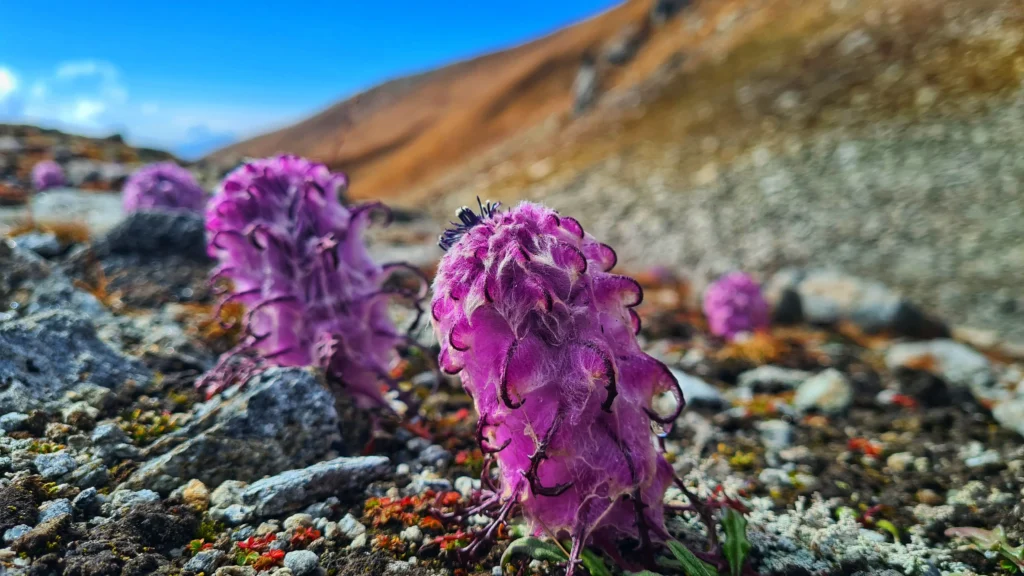
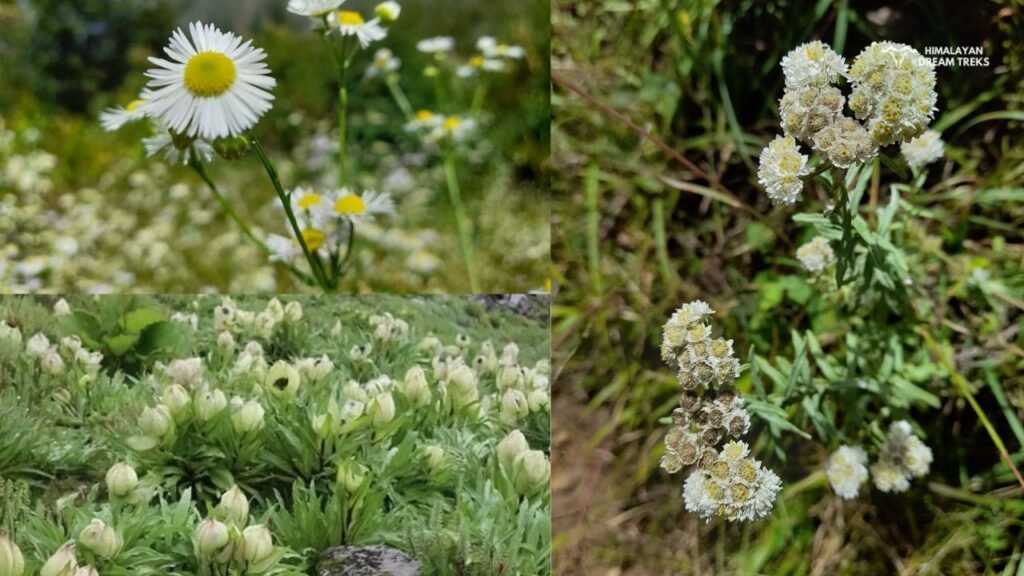

Fauna
Due to the beautiful flowers, the birds, butterflies, bees and bumblebees keep revolving around the bushes. The small birds feed on the pollen grains, while butterflies and bees feed on the floral nectar.
The animals that you can see on this trek are Himalayan Tahr, Musk Deer, Bear, Leopard and wild boar. In the interior valleys, the leopards walk freely, especially in winter. Besides this, people rear cattle like cows, sheep, mules, etc. Along with it, there are birds like Monal, Ghatu, and Himalayan Griffon.
While on this adventure, you can explore other beautiful destinations such as Harsil Valley, Nelong Valley, Uttarkashi, Khaling Glacier, Dayara Bugyal, and Surya Top.
Gallery
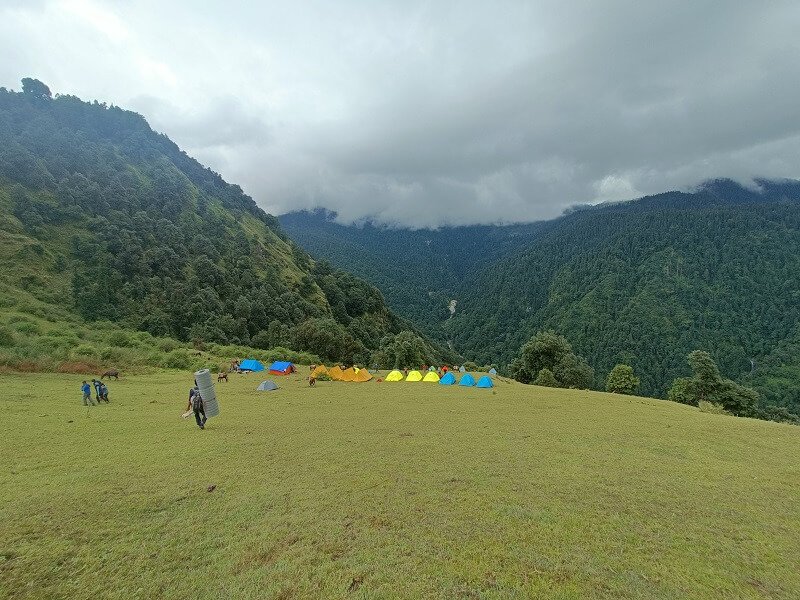
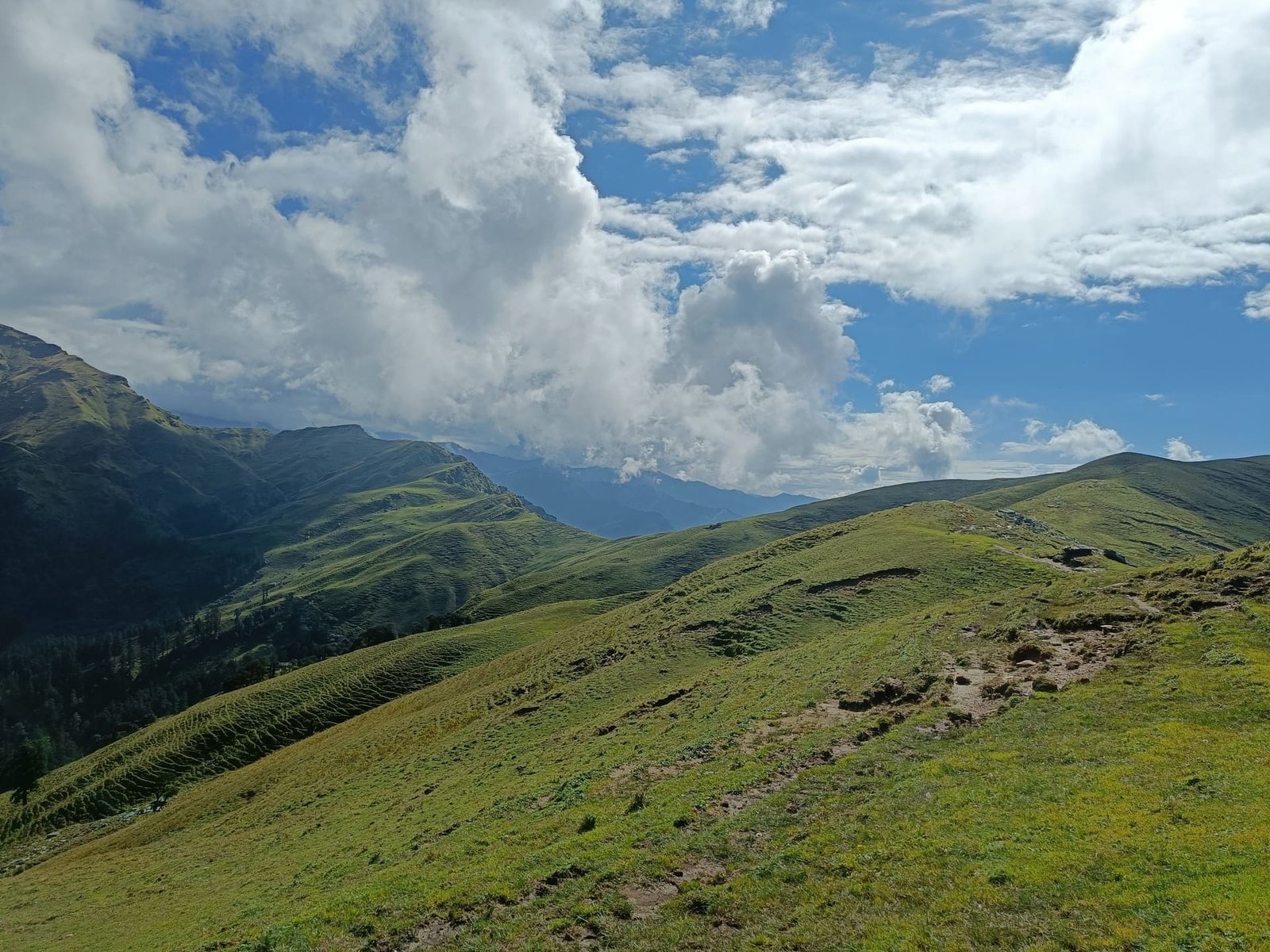
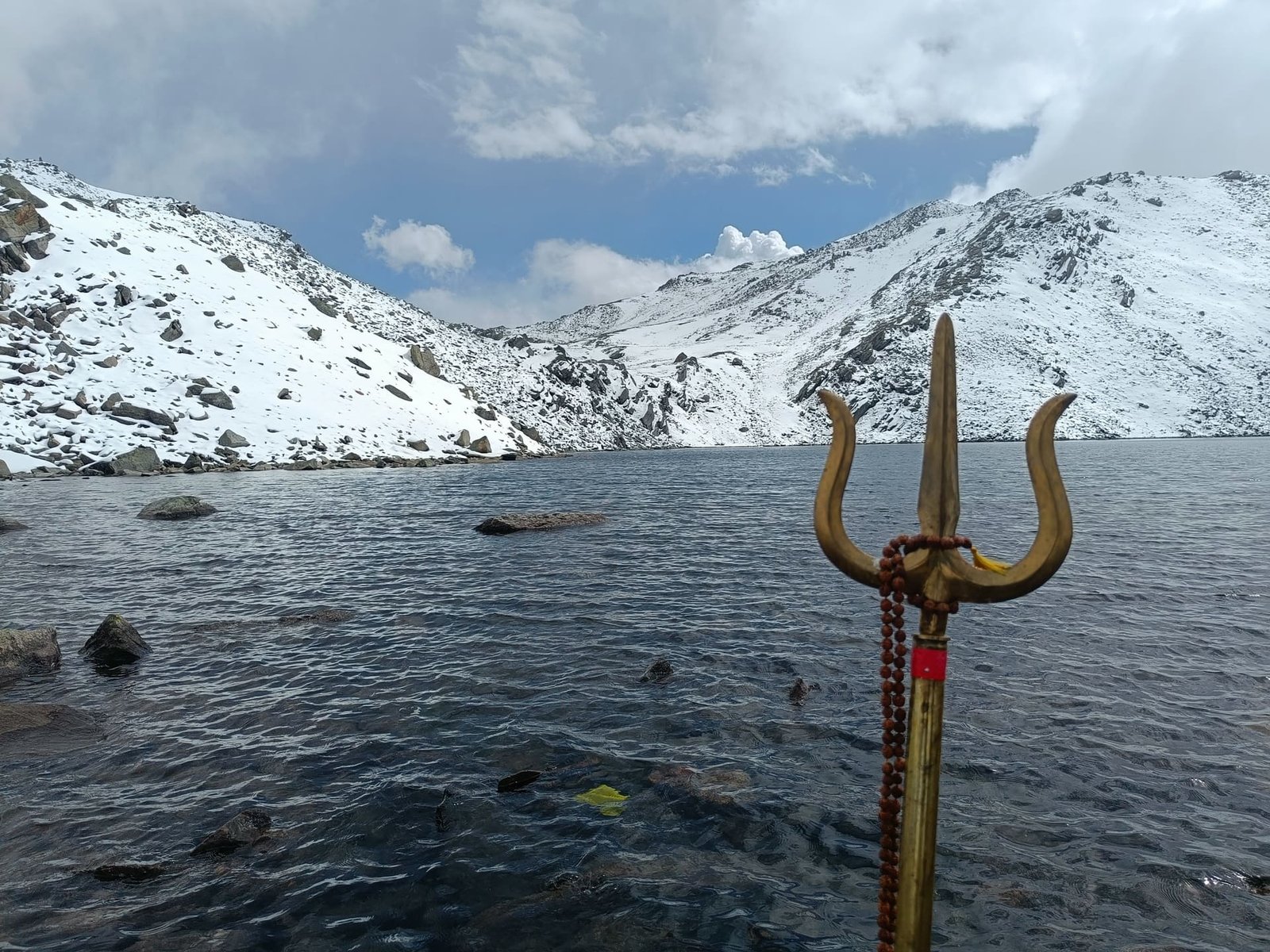

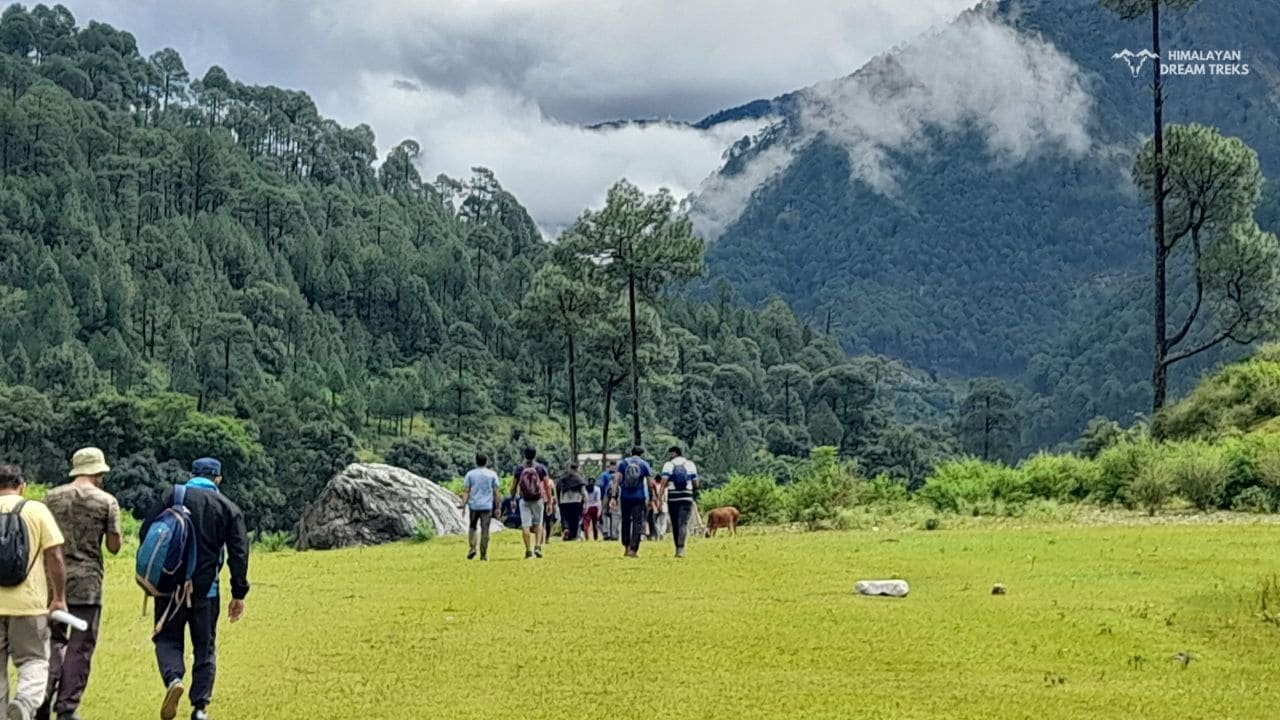
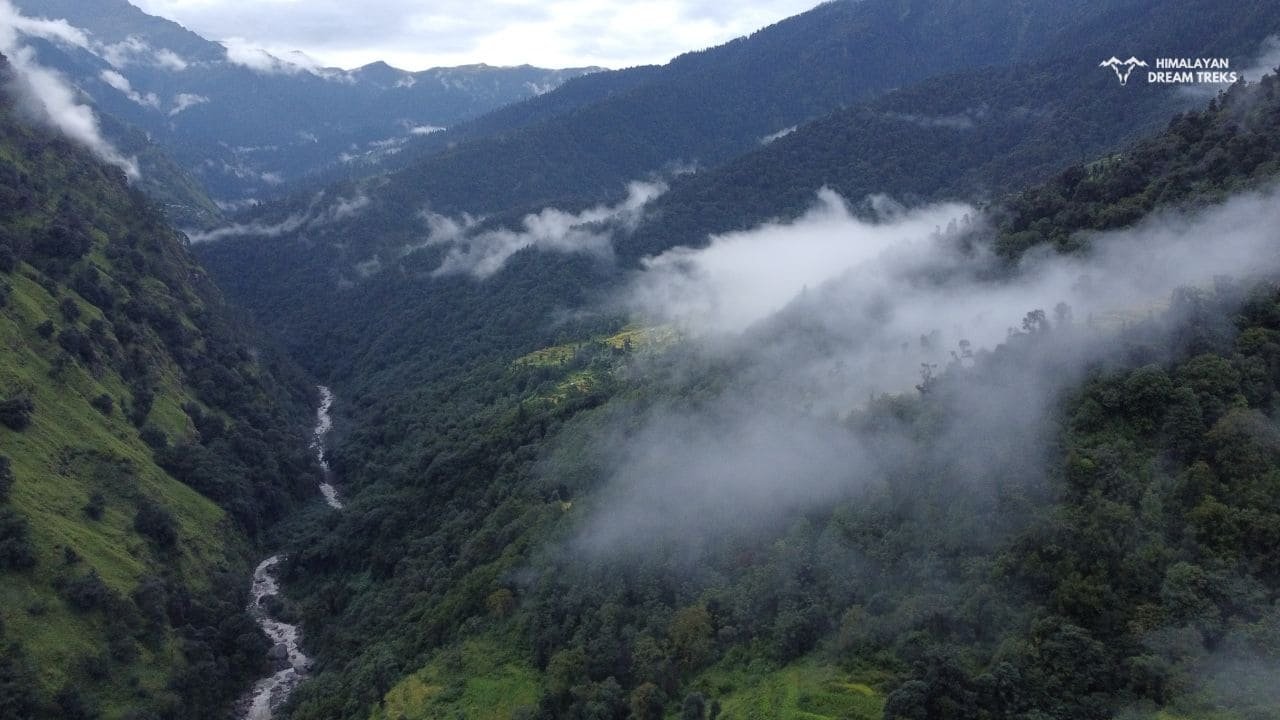
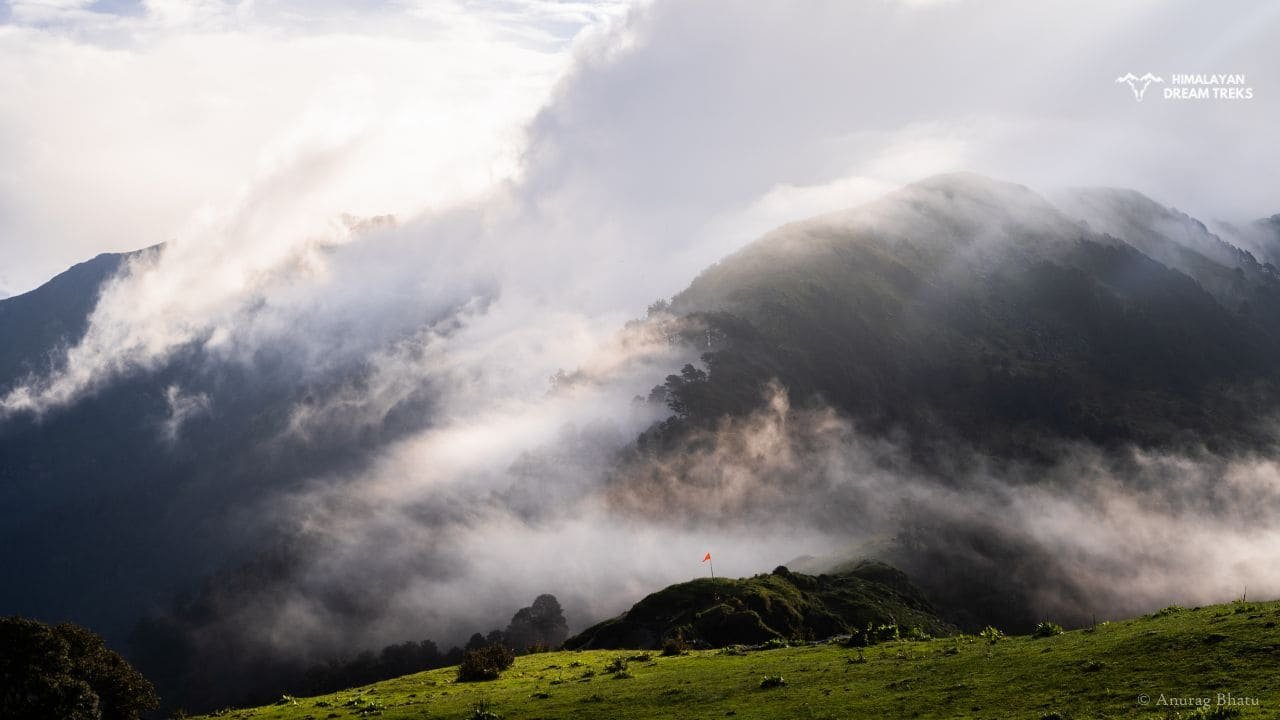
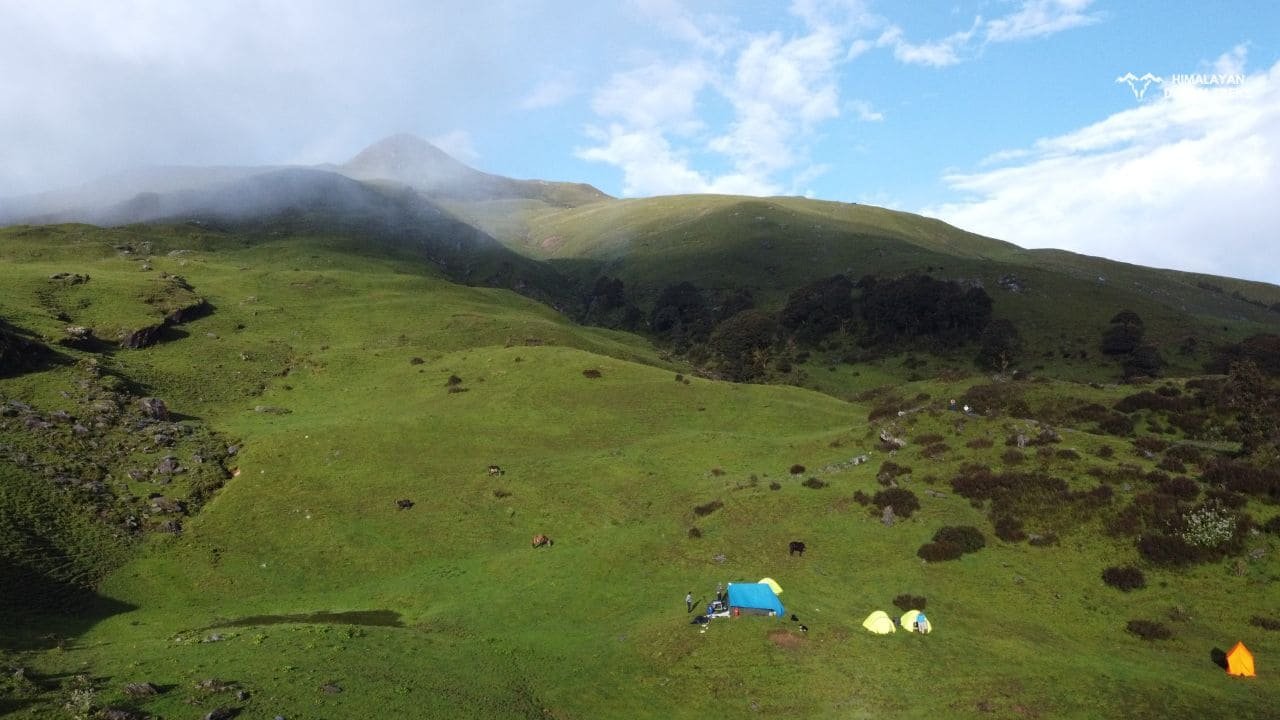

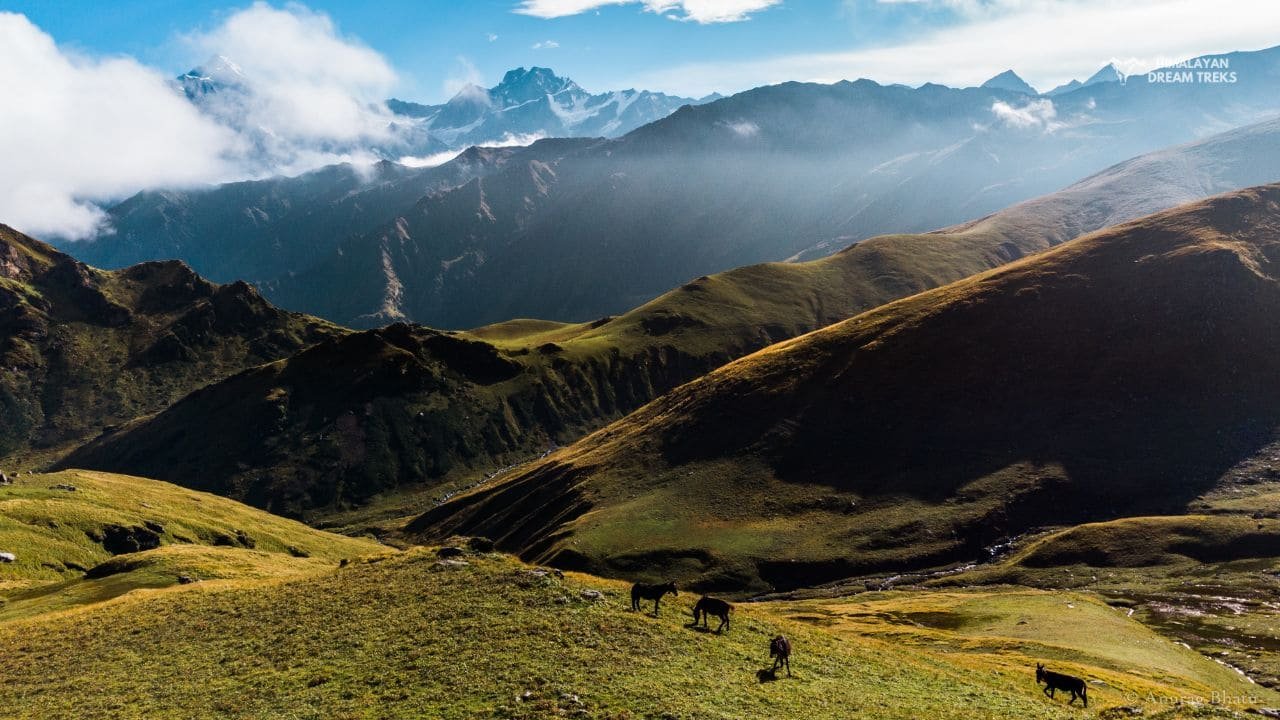

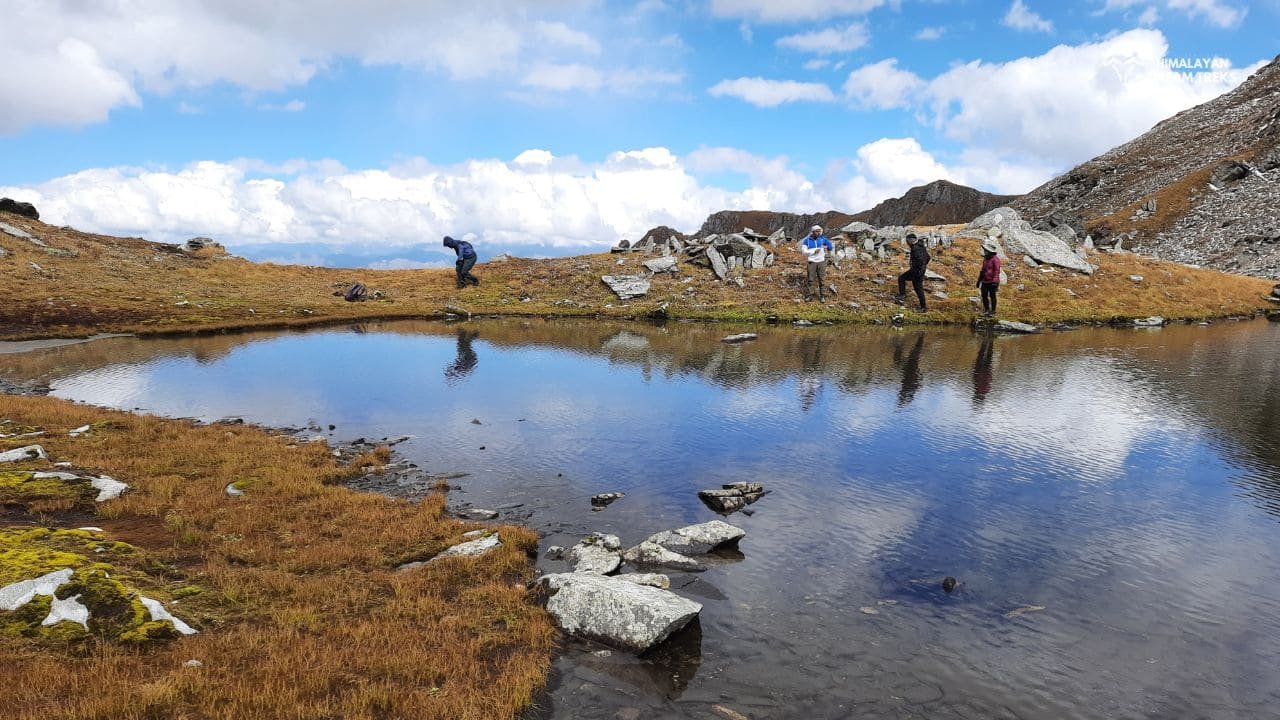

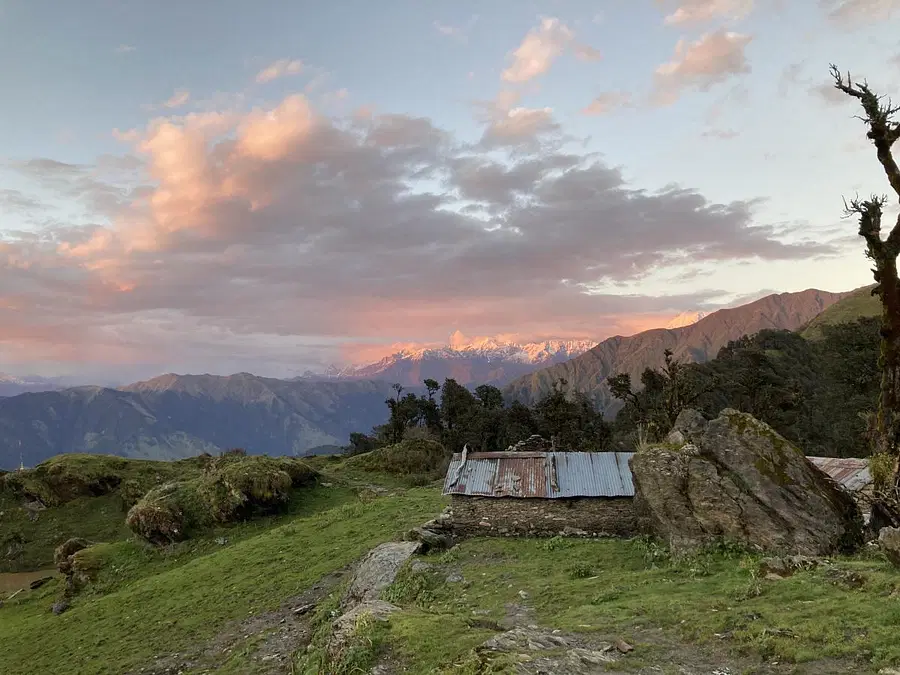
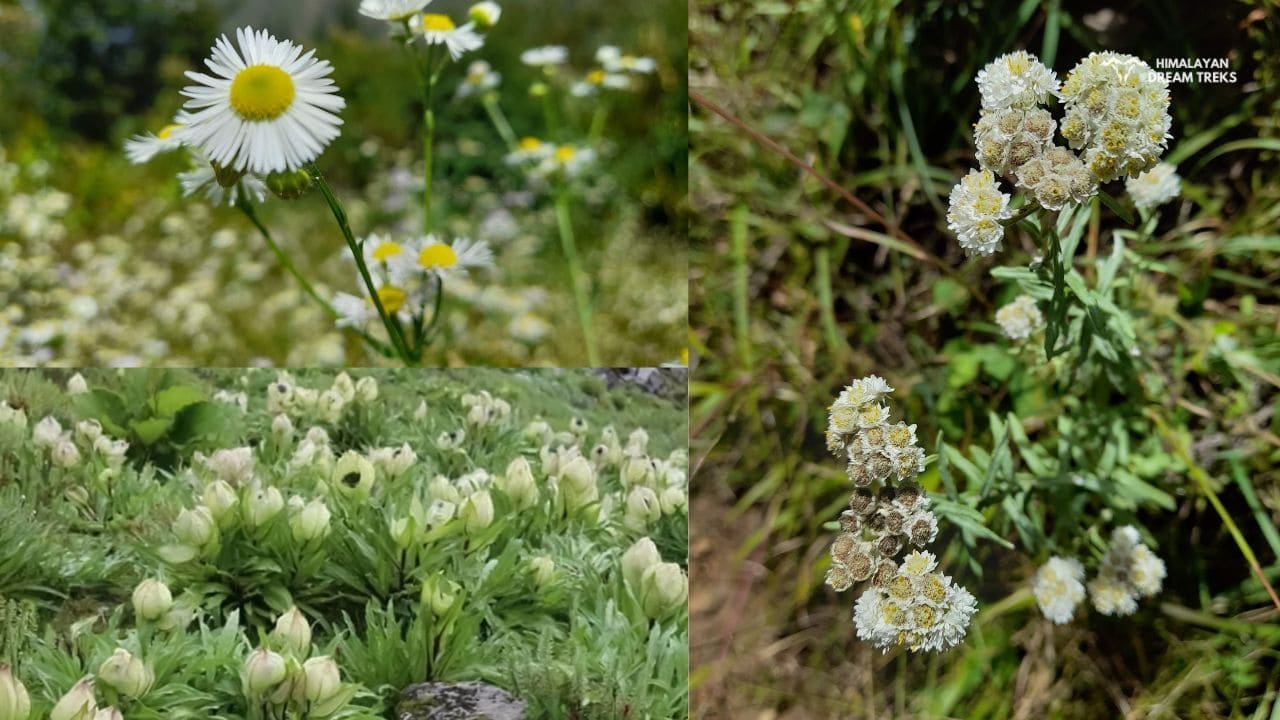


Map of Trail
FAQs
The measured distance between these two treks is hardly 14 km. Both are located around the Uttarkashi and Tehri districts’ border. The route to Sahastra Tal goes through the Kush Kalyan trek.
The total trek is 9 days, among which the 7 days are completely dedicated to the trek, and the rest of the time is for coming from and returning to Dehradun.
ID proofs such as an Aadhaar Card, PAN card, Health certificate, and other necessary documents must be brought to the trek to avoid any sudden emergency. Especially for underage travelers, the signed declaration from parents is a must, and for Non-Indians, passports are required for seeking permissions.
The realistic beauty of Sahastra Tal lies in its surroundings, which are completely engulfed in snow-clad giant glaciers and the abundance of the Brahma kamals around the lake. Its huge meadow areas are also one of its attractions.
Being secluded, the village does not provide ATM service; we suggest you withdraw a certain amount in the ATMs available in Dehradun or already carry enough cash before starting the trek.
For charging your phone or other electronic devices, we advise you to bring extra batteries or a power bank with you as there are no charging points after the Silla village is crossed.
Yes, fitness is essential for a trek, especially if you intend to take on a difficult trek in the Himalayas or other mountainous locations. Trekking entails walking for long periods of time through uneven terrain, often ascending and descending steep hills at high heights. To complete the walk safely and enjoyably, you must have a particular level of physical fitness.
Here are some of the reasons why fitness is essential for a trek:
- Endurance: Trekking is a physically difficult sport that necessitates endurance. You may be walking for several hours each day over several days, therefore it is critical to have a decent degree of cardiovascular fitness to keep up with the pace of the trek.
- Strength: Because you may be climbing steep hills and descending rocky terrain, trekking requires strength, particularly in the lower body. You may also need to carry a rucksack with your gear and supplies, thus strong leg muscles are required to hold the weight.
- Altitude: Many treks in the Himalayas and other hilly places include high-altitude trekking, which can result in altitude sickness. Physical fitness can help lower the risk of altitude sickness since your body adapts better to the thin air at higher elevations.
- Enjoyment: Being physically fit will help you appreciate the journey more since you will be able to keep up with the group and take in the lovely landscape without being too tired.
For maximum comfort, we offer three and four person tents with twin-sharing or three-sharing options.
During the trek, HDT provides wholesome and nutritional meals. The food is vegetarian and consists of rice, dal, veggies, chapati, paratha, pasta, noodles, and soup. During the trip, we also provide snacks like as biscuits, salty snacks, and dried fruits. Special dietary needs, such as vegan, gluten-free, or Jain meals, can also be accommodated if requested in advance.
On Demand
Available Dates
Call for booking-
+91 80896 93825 / +91 94565 46051
Call for booking-
+91 80896 93825 / +91 94565 46051




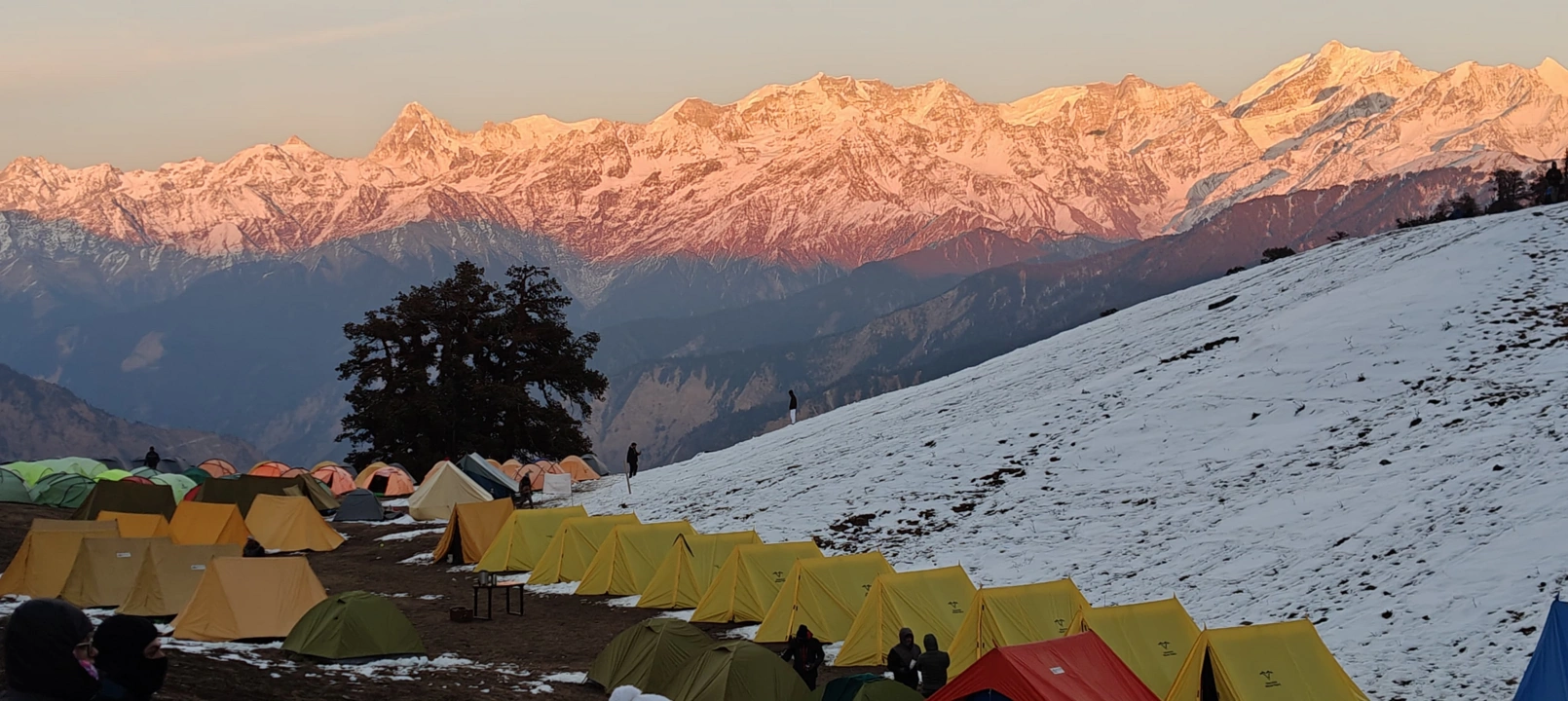
Leave a Comment